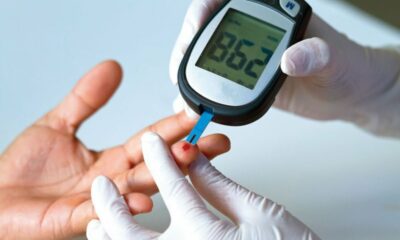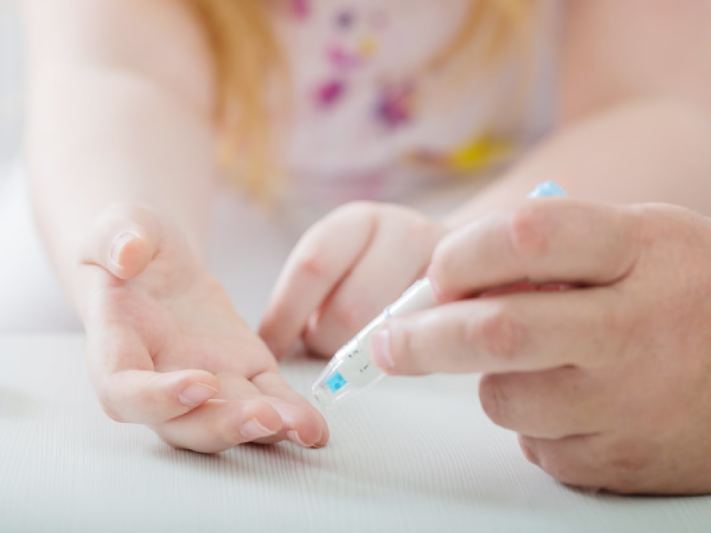As childhood diabetes continues to rise globally, the need for early detection and prevention becomes increasingly important. While type 1 and type 2 diabetes were once seen primarily in adults, the incidence in children is growing. Early detection is crucial in preventing the long-term complications of diabetes and managing the disease effectively. A breakthrough blood test is now offering hope by identifying the risk of diabetes in children before any symptoms develop, providing a powerful tool for early intervention.
The Growing Problem of Diabetes in Children
Diabetes, a chronic condition that affects how the body processes blood sugar (glucose), comes in two main forms: type 1 and type 2. Type 1 diabetes is an autoimmune disease where the body attacks the insulin-producing cells in the pancreas. Without insulin, glucose cannot enter the cells for energy, leading to high blood sugar levels. Type 2 diabetes, once rare in children, is now on the rise due to the growing prevalence of childhood obesity. In type 2, the body becomes resistant to insulin or doesn’t produce enough to keep blood glucose levels in check.
Both forms of diabetes can lead to serious complications if not managed properly, including heart disease, kidney failure, vision problems, and nerve damage. The earlier diabetes is diagnosed, the better the chances of managing it effectively and preventing these complications. This is why the discovery of a blood test that can predict the risk of diabetes in children before symptoms appear is such an important development.
The Importance of Early Detection
Early detection of diabetes is essential for several reasons. First, it allows for timely interventions that can delay or even prevent the onset of the disease. For example, children identified as being at high risk for type 1 diabetes may benefit from immune therapy treatments designed to slow the progression of the autoimmune response. Similarly, children at risk for type 2 diabetes can be advised on lifestyle changes, such as improving diet and increasing physical activity, to prevent the disease from developing.
Second, early diagnosis helps prevent complications that can arise from uncontrolled blood sugar levels. Many people with undiagnosed diabetes may have elevated blood sugar for months or even years before symptoms become apparent. During this time, damage to organs and tissues may occur, leading to complications like kidney disease, heart problems, and nerve damage. By catching diabetes early, doctors can intervene to control blood sugar levels and reduce the risk of these long-term effects.
Lastly, early detection helps families and caregivers to prepare for the lifestyle adjustments that come with managing diabetes. This includes learning about monitoring blood sugar levels, administering insulin, and making dietary changes to ensure blood sugar control. Education and support are critical to helping children and their families manage the disease effectively and maintain a high quality of life.
How the New Blood Test Works
The new blood test works by detecting specific biomarkers in the blood that are associated with the risk of developing diabetes. In the case of type 1 diabetes, researchers have identified autoantibodies—proteins produced by the immune system that mistakenly attack insulin-producing cells in the pancreas. These autoantibodies can be present in the blood long before any symptoms of diabetes appear, often years in advance. By identifying these markers early, the test can alert doctors and families to the possibility of type 1 diabetes and prompt them to monitor the child more closely.
For type 2 diabetes, the blood test measures a combination of genetic factors, metabolic markers, and insulin resistance levels. Since type 2 diabetes is largely influenced by lifestyle factors like diet and physical activity, early identification allows for proactive measures to prevent the disease. Children identified as being at risk for type 2 diabetes can be guided toward healthier eating habits, increased physical activity, and weight management strategies that may delay or prevent the onset of the disease.
Who Should Be Tested?
The new blood test could be particularly beneficial for children who have a family history of diabetes or other risk factors. For type 1 diabetes, this includes children with a sibling, parent, or close relative who has the disease, as they are more likely to carry the genetic markers associated with type 1 diabetes. Children with autoimmune conditions like celiac disease or thyroid disorders may also be at higher risk and could benefit from early testing.
For type 2 diabetes, children who are overweight or obese, especially those with a family history of type 2 diabetes, are prime candidates for the test. Additionally, children from certain ethnic backgrounds—such as African American, Hispanic, Native American, and Pacific Islander populations—are at a higher risk for developing type 2 diabetes and could benefit from early screening.
However, even children without known risk factors could potentially benefit from this blood test. As childhood obesity and sedentary lifestyles become more common, the risk of diabetes is increasing across the population. Early testing can help identify children who may not show any outward signs of being at risk but could still develop the disease.
The Benefits of Early Intervention
Once a child is identified as being at risk for diabetes through the new blood test, steps can be taken to delay or prevent the onset of the disease. This can be life-changing, as early intervention has the potential to significantly reduce the impact of diabetes on a child’s health.
1. For Type 1 Diabetes: Slowing the Autoimmune Attack
In children at risk for type 1 diabetes, the presence of autoantibodies indicates that the immune system has begun attacking the insulin-producing cells. While there is currently no cure for type 1 diabetes, researchers are exploring ways to slow or halt this autoimmune attack. Early interventions such as immune therapy treatments or participation in clinical trials for experimental treatments may help preserve the remaining insulin-producing cells and delay the need for insulin therapy.
Additionally, monitoring blood sugar levels more closely in children identified as being at risk can help detect the disease at its earliest stages. This allows for prompt treatment and prevents the severe complications that can occur when diabetes is undiagnosed, such as diabetic ketoacidosis (DKA), a life-threatening condition that occurs when the body starts breaking down fat for energy in the absence of insulin.
2. For Type 2 Diabetes: Lifestyle Changes to Prevent the Disease
In children at risk for type 2 diabetes, early detection provides a valuable window of opportunity to make lifestyle changes that can prevent the disease. Research has shown that maintaining a healthy weight, eating a balanced diet, and getting regular exercise can reduce the risk of developing type 2 diabetes by up to 58%. Children identified as being at risk can work with healthcare providers and nutritionists to develop personalized plans for healthy living.
Family involvement is crucial in helping children adopt healthier habits. Families can work together to make mealtimes more nutritious by incorporating more fruits, vegetables, whole grains, and lean proteins. Encouraging regular physical activity, such as playing sports, going for walks, or engaging in active play, can help children maintain a healthy weight and reduce their risk of diabetes.
3. Mental and Emotional Benefits of Early Detection
Beyond the physical benefits, early detection of diabetes risk can have positive effects on the mental and emotional well-being of both children and their families. Knowing that a child is at risk for diabetes allows families to mentally and emotionally prepare for the possibility of managing the disease. It also gives families time to educate themselves on diabetes management, ensuring that they are equipped with the knowledge and skills needed to support their child.
For children, early detection can reduce the anxiety and uncertainty that comes with an unexpected diabetes diagnosis. Being aware of their risk early on can help children understand the importance of making healthy lifestyle choices and taking an active role in managing their health.
The Future of Diabetes Prevention
The development of a blood test that identifies diabetes risk in children before symptoms appear represents a significant step forward in the fight against childhood diabetes. This test has the potential to transform diabetes care by shifting the focus from reactive treatment to proactive prevention.
In the future, widespread use of this test could lead to earlier and more targeted interventions for children at risk, ultimately reducing the number of new diabetes cases. Healthcare providers may be able to personalize treatment plans based on a child’s unique risk factors, using the information from the blood test to guide decisions about diet, exercise, and medical care.
Moreover, the knowledge gained from early blood testing could lead to new insights into the causes of diabetes, opening the door to innovative treatments and preventive measures. As more children are tested, researchers will have access to larger datasets that could reveal patterns and risk factors previously unknown. This could lead to breakthroughs in understanding how diabetes develops and how it can be prevented.
Conclusion
The discovery of a new blood test that can identify diabetes risk in children before symptoms appear offers hope for a future where diabetes is detected and prevented early. By recognizing the signs of both type 1 and type 2 diabetes long before symptoms arise, healthcare providers can intervene with personalized strategies to delay or even prevent the onset of the disease.
As this blood test becomes more widely available, it has the potential to revolutionize the way we approach diabetes care in children, shifting the focus from managing symptoms to preventing the disease altogether. For families, this means earlier diagnosis, better management, and a healthier future for their children. With ongoing research and advancements in diabetes prevention, the goal of reducing the global burden of childhood diabetes may be within reach.

 General Medicine1 week ago
General Medicine1 week ago
 Diabetology2 weeks ago
Diabetology2 weeks ago
 Diabetology2 weeks ago
Diabetology2 weeks ago
 General Medicine1 week ago
General Medicine1 week ago
 Diabetology5 days ago
Diabetology5 days ago
 Diabetology5 days ago
Diabetology5 days ago
 Diabetology3 days ago
Diabetology3 days ago
 Diabetology5 days ago
Diabetology5 days ago














